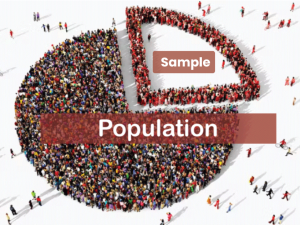Introduction
Surveys are research methods that use questions in various forms to gather information from a population. You have probably encountered a survey at some point, whether it was a quick phone call from a friend asking for your opinion on a new product or a pop-up window on a website inviting you to answer a few questions. These are common examples of surveys, and chances are, you’ve participated in one without even thinking twice about it.
A survey might seem straightforward, but designing and implementing an effective survey requires careful planning and execution. This guide will equip you with the knowledge you need to create meaningful surveys for your academic research that yield relevant results. In this guide, we will outline the essential steps for conducting an academic survey.
Surveys not only provide insights into human behaviours, opinions, and trends but also serve as the backbone of reliable and impactful research.
Understanding Surveys in Academic Research
Survey or questionnaire research is a practical and achievable method for researchers, regardless of their experience level. By following established guidelines, investigators can enhance the quality of their surveys, improving their chances of answering significant research questions and contributing valuable knowledge to their field.
An academic survey is a structured method to collect data on a specific topic. Researchers use surveys to gather information that can help answer research questions or validate existing theories. Once the data is collected, it is analyzed and presented in research reports, presentations, or academic papers.
Surveys have been an essential tool for gathering information for decades. In academic research, surveys provide valuable insights into behaviours, attitudes, and other factors relevant to the study, helping to fill gaps in knowledge and improve understanding of various issues.
Step 1: Define Objectives
Before beginning the survey process, it is crucial to define the research objectives. These objectives serve as your primary guide throughout the survey. By now, you have likely identified your research problem, objectives, and questions, and decided that survey is the best method to obtain the information you need. If not, this step is essential, as it provides direction for your survey.
Clearly defined research objectives will help you specify the insights or information you aim to gather, design focused questions that will result in relevant data, and determine how the survey results will answer your research questions.
For instance, if your objective is to understand how social media impacts study habits, your survey questions will focus on platforms, usage frequency, and study patterns. Remember that well-defined objectives will guide you in identifying the population your survey should target.
Step 2: Define Population and Sample
A well-defined objective gives you direction on the population your survey should target.
Target Population
The target population for your research consists of the individuals from whom the knowledge and information sought in the survey can be obtained. Think about who has the information you need for your research.
When defining your population, it’s essential to keep your research questions in mind. Identifying the right population helps you select the appropriate survey method and design questions tailored specifically to them.
For example, if your research objective is to study the impact of online learning on university students’ academic performance, the target population would be university students currently enrolled in online courses.
The population can be broad or narrow, for example-
Broad Population Examples:
Residents of a specific country.
Individuals aged 18–65 globally.
Online shoppers worldwide.
Narrow Population Examples:
Residents of a small town within a state.
Individuals aged 25–35 living in metropolitan cities in a specific country.
Online shoppers who purchased fitness products in the last six months.

Sample
A sample consists of the individuals you will invite to participate in your survey. Since it’s often not feasible to obtain responses from everyone in your population, you’ll collect data from a smaller group (the sample) to provide insights that represent the population of interest. The sample should represent the whole population as accurately as possible.
For instance, if your target population is university students in a specific region, your sample might include students from various universities.
Your survey results will be generalized to reflect the entire population, it is crucial to select your sample carefully. The sample size should be large enough to accurately represent the target population, ensuring the survey results are reliable and valid.
A well-selected sample ensures that the population is adequately represented. To achieve this, ensure the sample shares similar characteristics with the population, such as demographic factors or other traits relevant to your research objectives.
Confidence Level and Margin of Error
There are formulas to calculate your sample size based on your total population, the confidence level you want (e.g., 95%), and the margin of error you can accept (e.g., 5%).
The confidence level is how sure you are that your results represent the whole population. For example, a 95% confidence level means if you repeated the survey 100 times, your results would be correct 95 times out of 100. 95% is the standard for most research.
The margin of error is how much your survey results differ from the actual population. For example, if your result says 60% of students like online classes and your margin of error is 5%, the real percentage could be between 55% and 65%. 5% is acceptable for general surveys.
Calculating Sample Size
These are commonly used methods for calculating sample sizes:
Fisher’s formula: Use this if your population size is unknown or large (over 10,000).
Taro Yamane’s formula: Use this for smaller, clearly defined populations.
If you have a large, undefined population, use Fisher’s formula. However, if you know your population size is large and want more precision, go with Cochran’s. Also, for small, specific populations, Taro Yamane is straightforward and works well.
There are many free sample size calculators online. You can try:
- Raosoft Sample Size Calculator,
- SurveyMonkey Sample Size Calculator,
- Qualtrics Sample Size Calculator.
You just need to input your population size, confidence level, and margin of error, and they’ll calculate the sample size for you.
Step 3: Choose Research Method
There are various data collection methods available, but questionnaires and interviews are among the most commonly used ones.
Questionnaires and Interviews
Questionnaires are sets of written questions distributed to respondents to gather data.
Interviews are often face-to-face, interactions where open-ended questions are posed to gain deeper insights but they can also be conducted online.
Why Choose a Questionnaire?
The questionnaire is a good data collection option for you if you need data from a large population and when conducted online, it is less expensive. Also, due to its anonymity, it encourages honest responses. Quantitative research often aligns with questionnaires to gather numerical data.
Why Choose an Interview?
If your research requires comprehensive insight into your participant’s experiences or perspectives then an interview might be a good choice. Due to its nature, it enables immediate clarification of ambiguous answers and also allows follow-up questions to explore responses further, unlike a questionnaire. It may involve higher costs due to time, travel, transcription, and analysis. Qualitative research typically utilizes interviews for detailed narratives.
Factors to Consider Before Choosing
You should consider your research objectives, whether you need broad quantitative data or in-depth qualitative insights, the accessibility and willingness of your participants, and also your time and budget.
Using Both Methods
Mixed methods research can also be used, that is, interviews and questionnaires when seeking both breadth and depth of understanding. It leverages the strengths of both.
Step 4: Design Effective Survey Questions
Quality data can only be gotten from quality questions, so this is an important aspect.
Choose the Type of Questions
- Closed-Ended Questions: best for quantitative research requiring specific and comparable answers
Examples: Multiple-choice, Yes/No, Likert scale.
- Open-Ended Questions: best for qualitative research requiring detailed insights
Examples: “What are your thoughts on…?”
Decide on the Survey Format
This depends on how you will administer and collect survey responses. It could be an
- Online survey
- Paper survey
- Phone or face-to-face survey
Consider the Manner of Construction
- Length: Keep it concise; longer surveys can reduce response rates.
- Consistency: Use a consistent format for questions (e.g., stick to one type of rating scale).
Write Your Questions
- Avoid jargon or complex language.
Example: Instead of “Do you have a high frequency of using technology?”, use “How often do you use a smartphone each day?”
- Avoid Double-Barreled Questions: Don’t combine two questions into one.
Example: Instead of “Do you exercise and eat healthy?”, ask separate questions about exercising and eating habits.
- Avoid leading or biased phrasing.
Example: Instead of “Don’t you agree our product is amazing?”, ask, “How would you rate our product?”
Structure Your Survey:
Introduction:
Briefly explain the purpose of the survey and assure confidentiality.
Example: “We are conducting this survey to understand students’ study habits. Your responses will remain anonymous.”
Logical Flow:
Group similar questions together (e.g., demographics, habits, opinions).
Start Easy:
Begin with simple questions to ease participants in, then move to more complex or sensitive topics.
End Gracefully:
Include a thank-you note or option for additional comments.
Remember to ensure questions are not overloaded, keep them straightforward and unambiguous, and don’t assume the participant knows specific terms or concepts.
Step 5: Distribute the Survey
Before distributing your survey, it is essential to plan and prepare thoroughly to maximize response rates and ensure meaningful participation.
- Timing- Distribute your survey when your target audience is most likely to respond
- Channel of Distribution- Carefully select the appropriate channel for your survey, -personal distribution, Online, Email, or social media
- Purpose of Distribution- The way you introduce your survey to participants can greatly impact their willingness to respond, inform them of the purpose of the survey, why they were chosen to participate, and why their participation is important to the study, be polite and also assure them of the confidentiality of the survey.
Step 6: Analyze the Survey Results
Start by gathering all your data in one place, such as a spreadsheet. Clean the data by removing duplicates, checking for missing answers, and ensuring everything is accurate.
For qualitative data, they might need to be read, summarized, or transcribed if it was recorded. You can also group similar responses.
You can use SPSS for statistical analysis, if you’re not sure of how to analyze your data using SPSS our SPSS course has everything you need to know to analyze yourself.
Step 7: Write your Results or Report
When writing your results, aim to be clear and concise, focusing on the key findings. Avoid overwhelming the reader with unnecessary details. Your results section should include the following:
- Initial Objectives: Briefly restate the research objectives to provide context for the results.
- Types of Questions: Highlight the questions used in your survey or research (e.g., open-ended, closed-ended, Likert scale).
- Sampling Method and Selection: Describe the method used for sampling (random, convenience, etc.) and the selection process for participants.
- Survey Location: Indicate where the survey or research took place (e.g., online, specific geographic location, or within a particular organization).
- Method of Analysis: Outline how you analyzed the data (e.g., statistical methods, thematic analysis).
- Results: Present the core findings of your research, using tables, charts, or graphs for clarity.
- Discussion: Provide a brief interpretation of the results, without diving into a detailed analysis.
By adhering to these guidelines, you can confidently conduct an academic survey but If you find the process overwhelming or need expert assistance in designing, analyzing, or interpreting surveys, we’re here to support you. The DRACCO Team specializes in academic writing and research support, including survey design and data analysis. Contact us now and with our expertise, you can ensure your research is valid, reliable, and conducted with the highest ethical standards.


